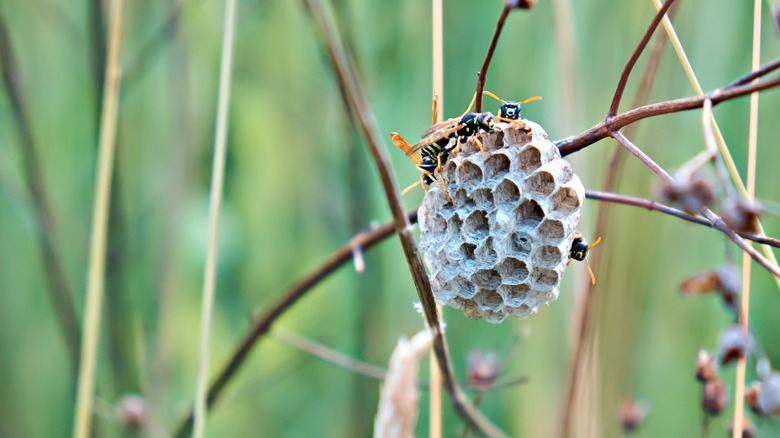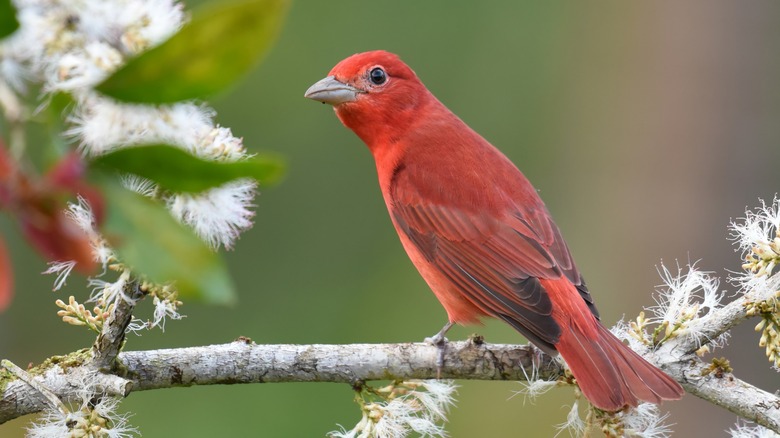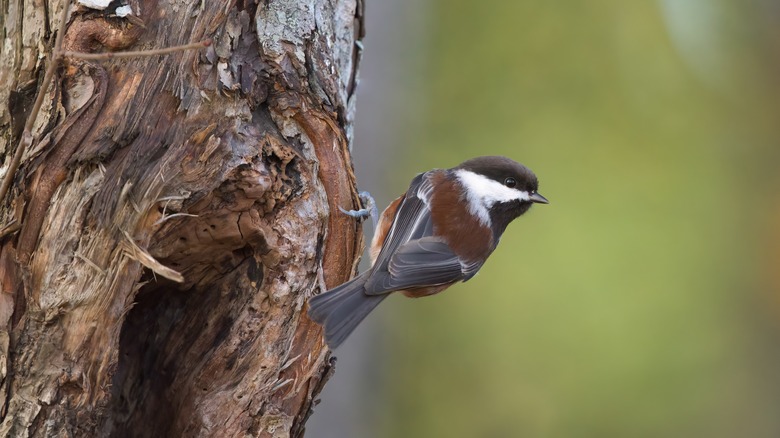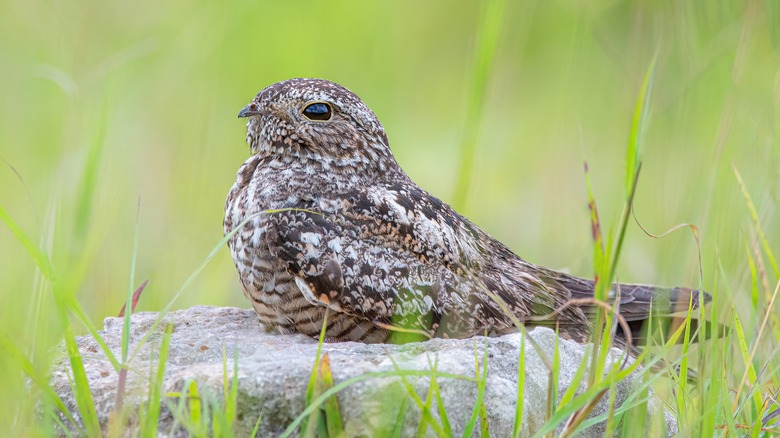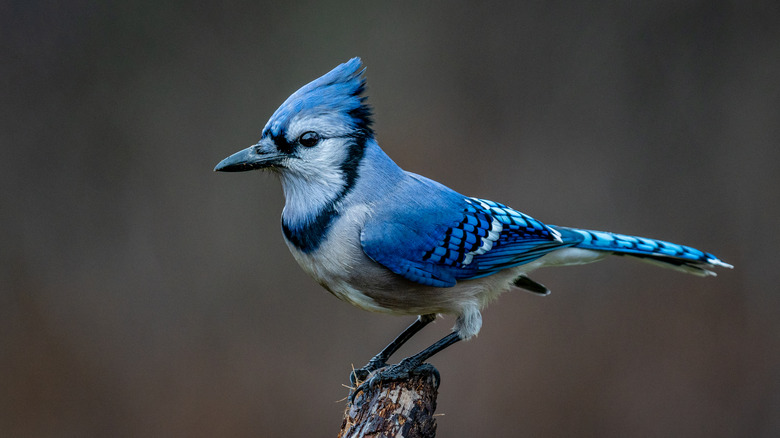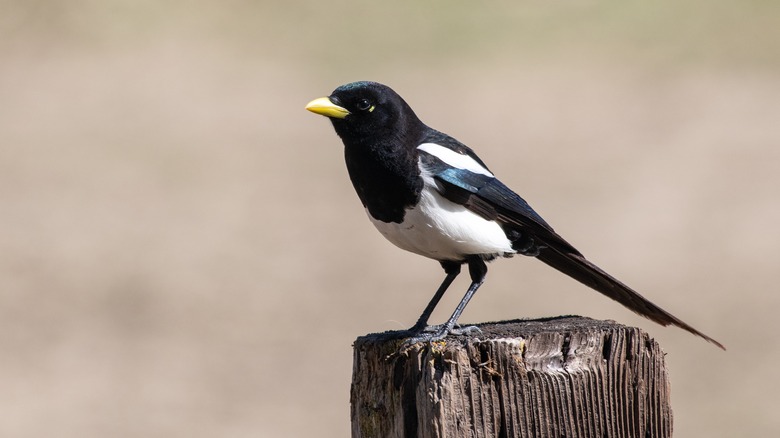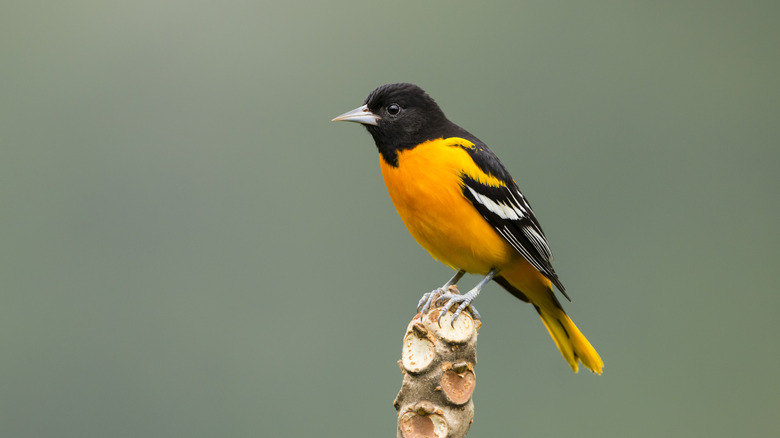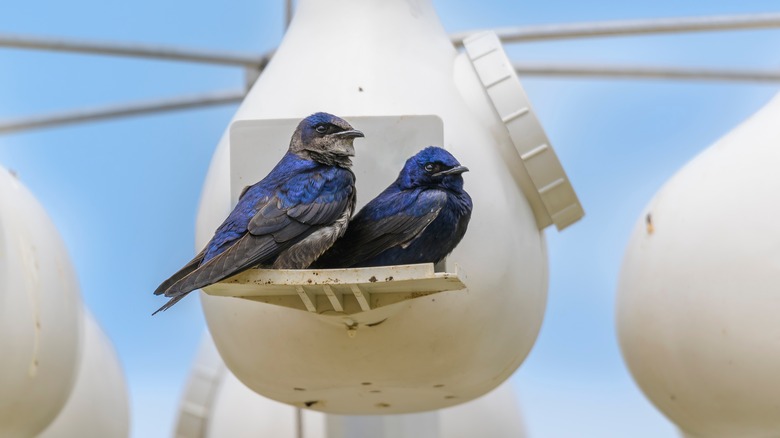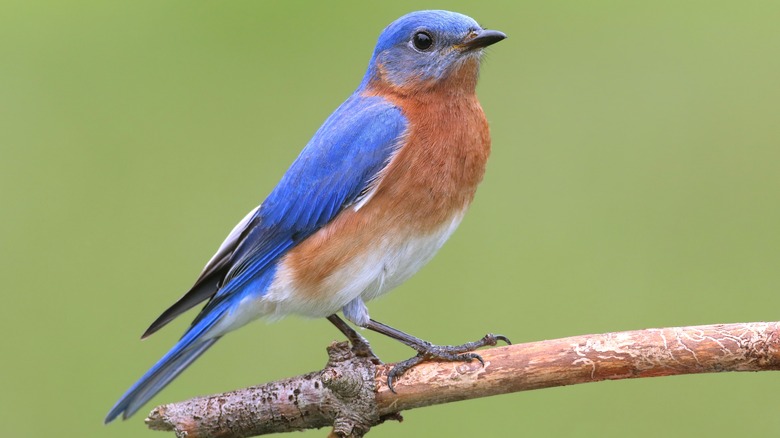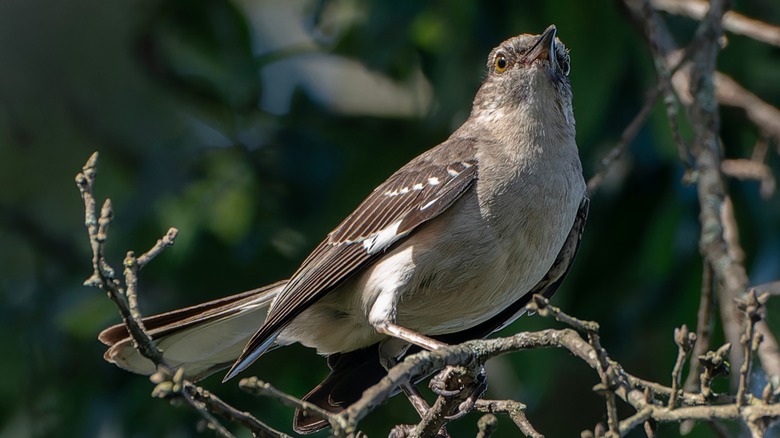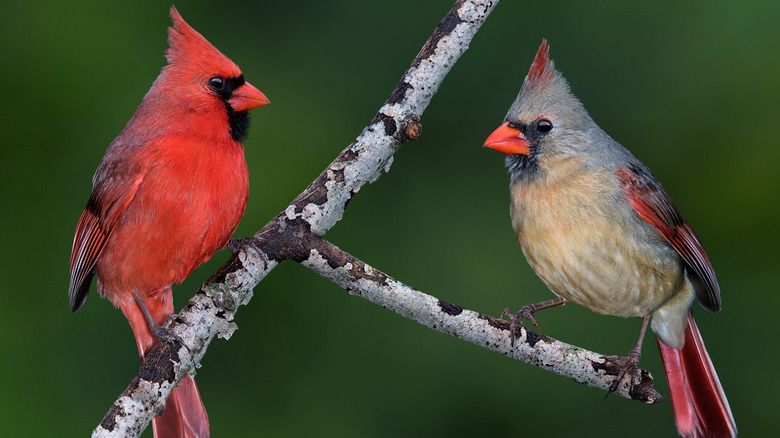10 Birds That Will Help You Solve Your Wasp Problem
When it comes to dining habits, birds that consume insects are called insectivores. That means they get the majority of their sustenance from a variety of flying and crawling insects. Others are omnivores since they'll eat what's readily available from season to season whether it's a bug, a seed, or a bite of fruit. Not all insect-eating birds feed on wasps, but a number do, whether as a steady diet for adults or a protein-packed dinner for their young. We've gathered a list of 10 species of birds — from summer tanagers and magpies to purple martins and mockingbirds — that include these stinging insects in their diet. Attracting specific birds to your yard may very well help you solve your wasp problem.
Believe it or not, there are actually 30,000 different species of wasps, and most of them aren't the social type that will sting you. Many wasps do far more good for the environment than harm, too, since they prey on other types of insects. They also serve as pollinators for an array of crops in many areas. Nevertheless, if they've become a nesting nuisance in the eaves, patio overhangs, and gazebos on your property, you're likely looking for ways to get rid of wasps. Encouraging these birds to visit your yard can help with the task of naturally controlling the wasp population.
1. Summer tanagers
Summer tanagers top the list for wasp-eating birds to attract to your yard. These bright red birds are pretty to look at, no doubt, but they also make a steady diet of flying insects like wasps. They can be seen catching them in the air and will pillage their nests as well. Summer tanagers also eat berries and other small fruits occasionally. These migratory birds live in tall trees in the Southeastern United States. To attract them, consider installing a higher-than-average bird feeder stocked with cherries or raisins, or planting a berry bush.
2. Chestnut-backed chickadees
Along the western coast from California into Canada, chestnut-backed chickadees dine on a variety of insects from small wasps to leafhoppers. They also eat the seeds of cone-bearing trees and berries. To attract these birds to your yard, consider adding a nesting box near the area where wasps are a problem. The best time of year to put up your birdhouse is usually before nesting season begins. Once you attract a nesting pair, they're known to use the same box for more than one season. They can also be attracted to bird feeders filled with black oil sunflower seeds.
3. Common nighthawks
These migratory birds inhabit a large swath of the United States and Canada. And since they live just about anywhere from cities to farms, you may very well spot common nighthawks nabbing insects out of the air, since their diet consists mainly of winged insects including pesky wasps. The more insects you have, in fact, the more likely you'll see these nocturnal birds swooping around your yard at dusk when wasps are heading back to their nests. If you see a common nighthawk making a nest on a flat surface, take this into consideration before shooing it away.
4. Blue jays
While blue jays have been included on lists of birds you do not want to be seeing in your yard due to their notably raucous behavior, they can indeed help with eliminating wasps. They don't usually eat adult wasps, but they will kill them so they can dine on the larvae burrowed in their nests destroying them in the process. Luring blue jays to your property can be as easy as putting up a bird feeder filled with peanuts or sunflower seeds, but not the type without shells. Blue jays prefer to shell their own nuts.
5. Magpies
Yellow-billed magpies, found only in California, eat a variety of insects including wasps. Black-billed magpies live in western parts of the United States and Canada and devour many different insects. Some people try to discourage magpies since they may swoop people and pets when they're nesting, and they'll also feed on fruit trees and veggie gardens to supplement their diets. If you do want to attract them, however, adding a birdbath to your yard may entice them to visit. Mulch and rocks in gardens will also lure many of the insects they like to eat.
6. Baltimore orioles
These colorful songbirds are prevalent in the springtime over the Northeastern United States into the Midwest until late July and August when flocks start migrating south. They dine on wasps during the summer months along with lots of other insects. They're known to eat fruit as well, so many people attract them to their yards by adding orange halves or grapes to their bird feeders. Baltimore orioles are known for nesting in elm trees, too, so if you have one on your property that's a definite plus in the attraction department.
7. Purple martins
These songbirds are welcome visitors to backyards since they feast on flying insects including wasps. Purple martins migrate all the way from the Amazon Basin to nest in the United States. Those heading to the eastern part of the country rely on humans to provide nesting boxes and houses for them in open areas since they tend to feed while flying. Putting up a cluster of gourd-shaped boxes or a purple martin house where many mating pairs from a flock can live is a great way to attract them to your property. They're also a species that eats mosquitos!
8. Eastern bluebird
Eastern bluebirds, as their name implies, inhabit the eastern half of the United States, Canada, and parts of Central America. They usually peck insects from the ground, but can catch them mid-flight, too. When nesting, scavenging for insects like wasps increases drastically to feed their young much-needed protein, and turn to berries in the winter to supplement their diets. Eastern bluebirds enjoy frolicking in fountains so adding one to your yard can attract them. If you want to be really ambitious, you can also set up a mealworm feeder since those are one of their preferred snacks.
9. Northern mockingbirds
From coast to coast in the southern part of the United States, northern mockingbirds can be heard emulating the songs of other fowl in both town and country settings. They mainly feed while walking on the ground — sometimes quite briskly — and wasps are among the many insects they're known to dine on. When they're not eating insects, they subsist on berries and fruit in the wild. Northern mockingbirds aren't really attracted to feeders containing seed but will sometimes be enticed to visit a yard where apples or oranges are offered as snacks for them.
10. Northern cardinals
Northern cardinals get an honorable mention as wasp eaters since these stinging insects aren't a primary source of food for them. While cardinals are nesting, though, they look for extra protein for their babies and increase their hunt for insects including wasps. Inhabiting the western half of the United States as non-migratory residents, they mostly eat seeds and berries. They're particularly fond of black oil sunflower seeds at feeders, so keep that in mind if you're looking to bring a few to your yard. Planting berry bushes is also another way to attract more northern cardinals.
